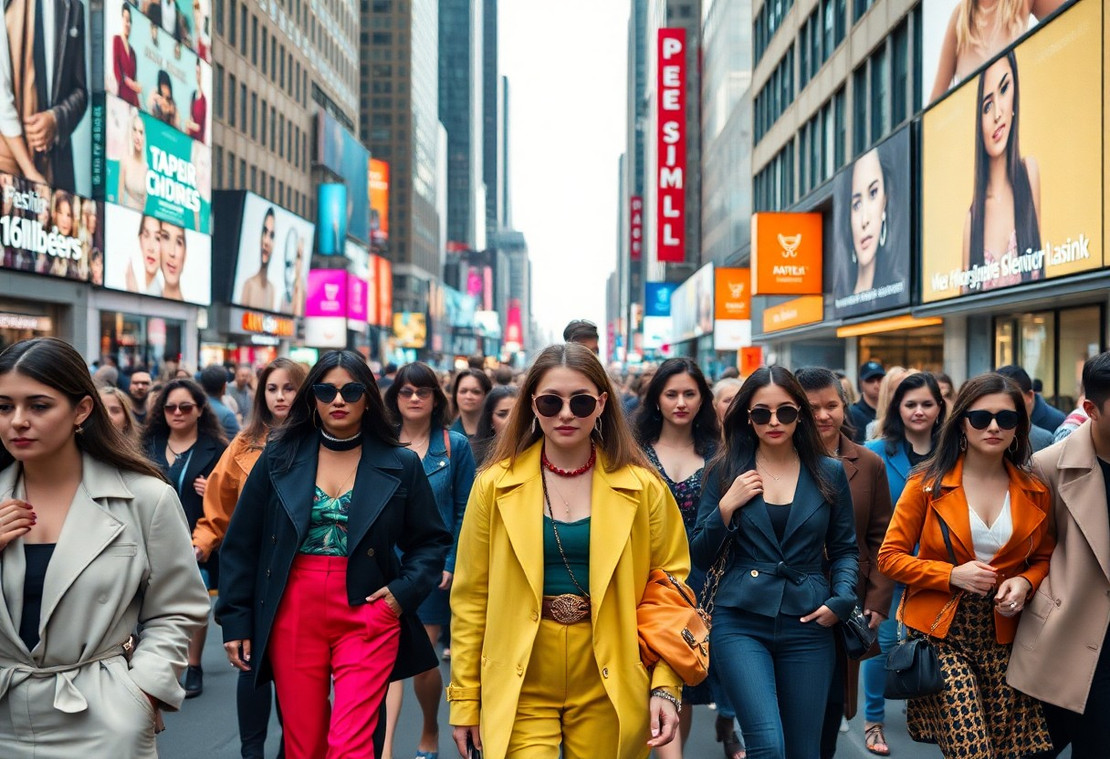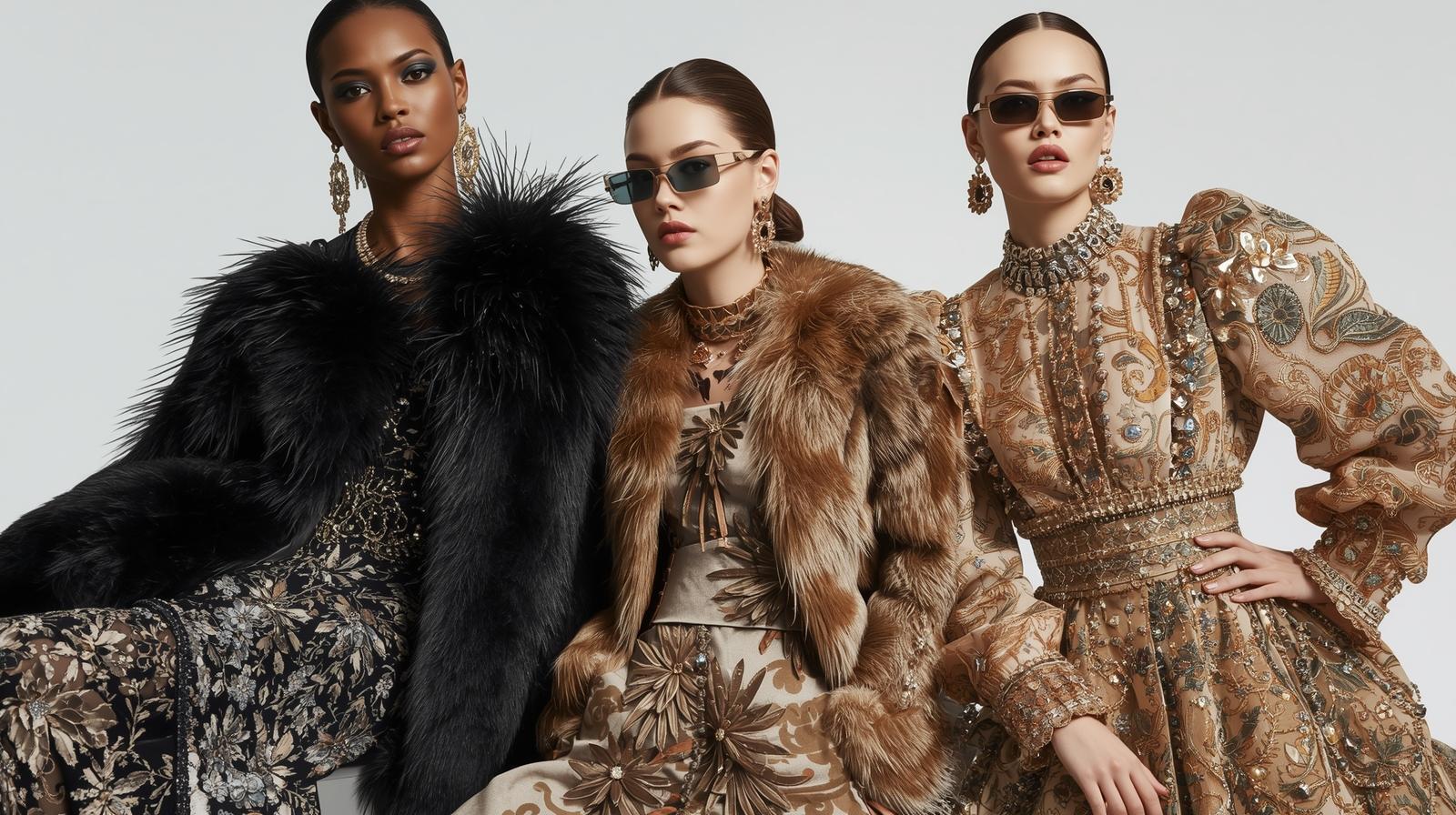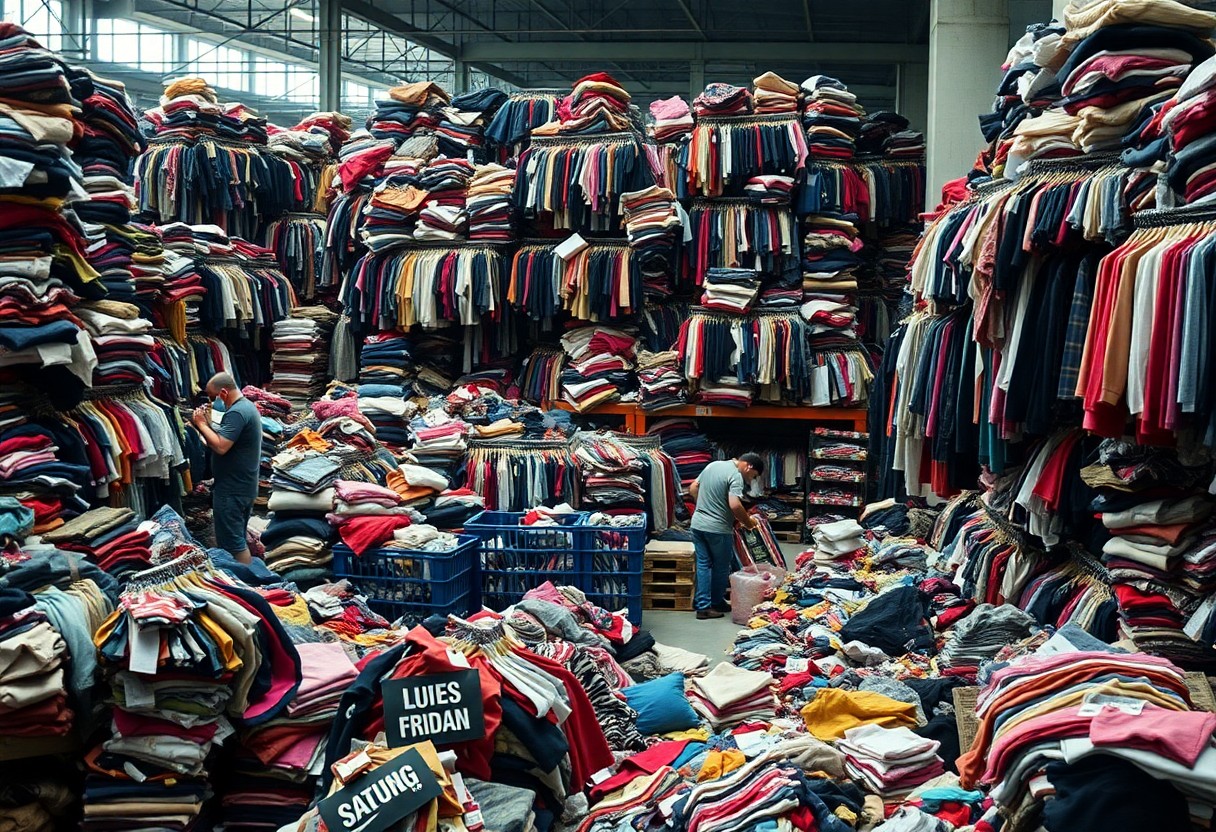14th Nov 2025
Social Media Speeds Up the Fashion Trend Cycle

Many people may not realize how social media has transformed the fashion landscape, accelerating the trend cycle at an unprecedented pace. Your daily scroll through platforms like Instagram and TikTok exposes you to the latest styles, leading to quick shifts in consumer preferences. This rapid dissemination fosters a dynamic environment that can make trends feel fleeting, compelling brands to adapt quickly. However, this constant change can also create a consumption overload, pressuring you to keep up with what's in vogue. Understanding this cycle is crucial for navigating your personal style effectively.
The Evolution of Fashion Trends
Recognizing how quickly trends evolve helps you navigate the fashion world. As styles shift from season to season, you’ll notice a rapid acceleration, driven largely by the digital landscape. Social media platforms have become imperative to trend propagation, often dictating what’s in and what’s out in real-time. This dynamic environment has made it easier for you to discover and adopt new styles almost instantaneously.
Historical Perspective
The evolution of fashion trends dates back centuries, influenced by cultural shifts, technological advancements, and social movements. Each era, from Victorian elegance to the rebellious spirit of the 1960s, has shaped the way you view clothing. For instance, the Industrial Revolution marked a significant transition from handmade garments to mass production, expanding access to fashion and accelerating the cycle of trends.
The Role of Media
Your understanding of fashion trends is largely shaped by media exposure, from print magazines to television shows and now, social media. The immediacy of news creates a feedback loop, where emerging designers can see trends go viral overnight. Traditional media still holds sway but now complements the high-speed chatter of platforms like Instagram and TikTok, where you witness fashion in real time.
Media’s role extends beyond mere promotion; it actively shapes consumer perceptions and behaviors. For example, a viral TikTok video featuring a new outfit can lead to a skyrocketing demand within days. Additionally, fashion influencers harness the reach of their platforms, endorsing brands and styles that resonate with you. This synergy between traditional media and modern platforms means every outfit you see can influence your purchasing choices, often within the same day, reshaping your wardrobe in an instant.
The Impact of Social Media on Fashion
Today, social media plays a transformative role in how fashion trends emerge and evolve. Rapid dissemination of style information has redefined the traditional fashion calendar, making it possible for trends to go viral in a matter of hours. As you scroll through your feeds, you’re likely to encounter new looks and styles that instantly influence your wardrobe decisions and shopping habits.
Instantaneous Sharing
With platforms like Instagram and TikTok, fashion enthusiasts can share their outfits within seconds, inviting global engagement. This rapid sharing fosters an environment where trends propagate quickly, often leading to the rise and fall of styles before they even hit traditional retail spaces.

Influencers and Their Effect
Influencers wield substantial power over fashion trends, often dictating what's in vogue with their curated posts. Their vast reach means that a single endorsement can lead to significant consumer demand, altering the landscape of fashion marketing.
When influencers showcase clothing on platforms with millions of followers, they create an *immediate desire* that brands can't ignore. For instance, a single Instagram post from a well-known influencer can spark a trend that results in a garment selling out within hours. This phenomenon illustrates how influencer marketing has not only shortened the lifecycle of fashion trends but also how brands must rethink their strategies to keep up with *real-time consumer behavior.* Influencers often set the pace, making it imperative for brands to be agile, responsive, and attuned to the latest online discussions to remain relevant in a fast-paced market.
The Fast Fashion Phenomenon
The fast fashion phenomenon redefines how you engage with clothing, enabling rapid trend cycles that can be both thrilling and overwhelming. Brands like Zara and H&M exemplify this shift, updating their collections weekly and making the latest styles accessible for a fraction of the cost. This immediacy fuels your desire to stay on-trend, often leading to impulse buys and a constant churn of clothing in your wardrobe.
Production Speed
Production speed in fast fashion is unprecedented, with designs going from concept to retail in as little as two weeks. Companies leverage advanced supply chain technologies and overseas manufacturing to keep costs low and flexibility high. This rapid production allows you to see runway styles in stores almost immediately, reinforcing the expectation for immediate gratification in fashion.
Consumer Behavior Changes
Your shopping habits have drastically shifted due to fast fashion's influence. You now expect frequent new arrivals, driving a "buy now, wear now" mentality. The emphasis on affordability leads to a growing collection of inexpensive garments, often overshadowing quality. Additionally, social media amplifies this by showcasing influencers wearing the latest trends, making it easier for you to feel pressure to conform.
This shift in consumer behavior stems from the intersection of affordability and accessibility. You find yourself continuously scrolling through feeds showcasing fresh styles, prompting the desire to refresh your wardrobe constantly. The availability of trending items for a low price means you might purchase multiple pieces each season, contributing to a cycle that prioritizes volume over value. Studies indicate that shoppers are now buying 60% more clothing than they did a decade ago, reflecting this relentless drive for newness and diversity in your personal style. As the fast fashion model thrives, it alters not just your shopping experience but also your broader perceptions of value and sustainability in fashion.
Trends vs. Fads
Understanding the distinction between trends and fads is crucial in navigating the fast-paced fashion landscape. Trends are long-lasting shifts in style and consumer behavior, often rooted in cultural or societal changes, while fads refer to short-lived, intense bursts of popularity that quickly fade. Your ability to identify these differences can make or break your fashion choices and investments.
Defining Characteristics
Trends are characterized by their durability and influence across multiple seasons, evolving slowly and gaining broad acceptance, while fads are fleeting and often stem from viral moments, only capturing attention for a brief time. Trends typically reflect deeper cultural sentiments, whereas fads often rely on novelty and social media buzz.
Social Media's Role in Differentiation
Social media accelerates the identification and categorization of trends versus fads, as platforms allow you to observe real-time engagement and reactions. Elements like shares, likes, and comments provide insight into whether a style is gaining lasting traction or simply enjoying momentary hype.
This immediate feedback loop on social media platforms enables you to spot the difference between a sustainable trend and the latest fad. For instance, a trend such as oversized blazers might be continuously worn by various influencers across seasons, showcasing versatility and longevity. In contrast, a fad such as tie-dye sweatpants might gain massive engagement during a specific period but soon lose momentum as tastes shift. Social media's visibility allows you to discern which styles will endure and which ones are merely passing phenomena, guiding your fashion choices wisely in an ever-evolving landscape.

The Environmental Impact
The environmental impact of the accelerated fashion trend cycle is profound. With the rise of fast fashion, the industry contributes over 92 million tons of textile waste each year, significantly polluting landfills and oceans. Manufacturing processes consume vast resources, leading to water shortages and extensive carbon emissions. As trends shift quickly, so do production practices, further exacerbating these environmental issues.
Fast Fashion's Consequences
Your participation in fast fashion contributes to the depletion of natural resources and a dramatic rise in pollution levels. The water-intensive processes involved in creating synthetic fabrics and dyeing garments alone can pump 2,000 gallons of water into the environment for a single outfit. This unsustainable cycle not only damages ecosystems but also creates an ever-growing demand for cheaper, faster production methods.
Sustainable Trends
Shifting towards sustainable trends offers a promising solution to reduce your environmental footprint. Brands increasingly emphasize ethical production practices, utilizing materials like organic cotton or recycled fabrics. You can make a positive impact by choosing pieces that prioritize sustainability, thus supporting an industry that values both style and the planet.
For instance, brands like Reformation and Patagonia are leading the charge by creating stylish clothing with minimal environmental impact. Reformation tracks its environmental footprint, showcasing how each item impacts the planet. Meanwhile, Patagonia commits to repairing and recycling garments, encouraging you to embrace longevity over disposability. By aligning your fashion choices with sustainable trends, you not only enhance your wardrobe but also contribute to a healthier planet and future for the fashion industry.
The Future of Fashion Trends
As the pace of fashion trend cycles accelerates, you can expect a landscape defined by instantaneous feedback and a constant reinvention of styles. The days of seasonal collections may dwindle, giving way to a cycle where trends emerge and fade within weeks. As brands adapt to this rapid pace, they may focus more on sustainable practices and collaborations that echo consumer urgency for authenticity and inclusivity.
Predictions for the Coming Years
In the coming years, fashion trends are likely to tilt towards eco-consciousness and individuality, driven by consumer demand for sustainability and personal expression. You might see an increase in brands prioritizing transparent supply chains and circular fashion principles. The rise of micro-trends will also continue, as niche communities dictate styles that resonate specifically with their audiences, rather than broad mainstream trends.

The Evolving Role of Technology
Technology will increasingly influence your fashion experience through innovations such as AI-driven trend analysis, virtual try-ons, and blockchain for ensuring transparency. Fashion brands will leverage platforms that utilize machine learning to predict emerging trends by analyzing social media chatter and purchasing behavior more efficiently than ever before.
As technology continues to evolve, its integration into the fashion industry will enhance your shopping experience significantly. For instance, augmented reality (AR) will allow you to visualize how clothes look on you without physically trying them on, while AI algorithms can recommend styles tailored to your individual preferences. Moreover, blockchain technology can create a verifiable record of garment lifecycle, fostering transparency that could reshape your trust in brands. This technological embrace not only streamlines processes but also aligns more closely with your values, especially concerning sustainability and ethical considerations in fashion.
Conclusion
Ultimately, social media has transformed the fashion industry by accelerating the trend cycle, allowing you to discover new styles almost instantly. With platforms that foster rapid sharing and engagement, your exposure to evolving fashion trends is constant and immediate. This phenomenon not only influences your purchasing decisions but also shapes your personal style, making it necessary for you to stay informed and adaptable in the ever-changing landscape of fashion.
